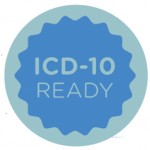
Image Credit: wavebreakmedia/shutterstock
Full implementation of ICD-10 will go live on Oct. 1, 2015, and congressional leaders have confirmed there will be no further delays. The transition to ICD-10 is not just a simple update; it is a major revamping of diagnosis coding. With the complexity of coding using the ICD-10 system and the high risk of disruptions to workflow and reimbursement, robust education and widespread testing on all aspects of ICD-10 are needed to facilitate a seamless transition. With only three months left to prepare, figuring out what needs to be completed to be ICD-10 compliant is a project within itself, but the key is identifying the gaps to prioritize where to focus your time and energy. Just like a jigsaw puzzle, it will be necessary to have the required pieces and understand how they fit together for transition to the new code set.
Every healthcare stakeholder will be affected by the transition to the expanded ICD-10 code sets, as these changes will impact medical coding operations, software systems, reporting, administration, registration and more. ICD-10 implementation requires a methodical approach consisting, in part, of the following steps:
- Evaluate all clinical, financial and business systems that currently use ICD-9 codes. This includes your practice management system, EMR and encounter forms/superbills. Keep in mind that wherever ICD-9 is used currently in your practice, ICD-10 codes will take its place.
- Collaborate with practice management vendors, billing services, and payers to ensure that ICD-10 implementation is a priority for them and discuss implementation plans to ensure a smooth transition.
- Draft a budget that adequately covers changes to business processes, changes to software systems and staff training. It is important to assess staff training needs, as coding and guideline changes in ICD-10-CM for rheumatic conditions may require coders to learn new terms and look for additional information in documentation to reach the highest level of specificity in the code set.
- Identify potential changes to workflow and business processes. Consider changes to existing processes, including clinical documentation, encounter forms, and other requirements for quality health reporting.
Systems are not the only thing that needs evaluation and updating—it is very important to apply a clinical documentation improvement gap analysis to patient charts (for more information on the importance of clinical documentation, see “Clinical Documentation Improvement Programs Can Protect Physicians,” The Rheumatologist, August 2014). Clinical documentation improvement is not a new concept, but it is a crucial piece of the puzzle for ICD-10 readiness. Issues related to inconsistent, missing, conflicting or unclear documentation must be resolved now under ICD-9, as well as in the future with ICD-10-CM, to improve coding and documentation practices. Improvement in recording key elements in the patient record for etiology, severity of illness, laterality and anatomical site are the first steps that will make a difference in any ICD-10–related denials, but most importantly, it will improve compliance with the new coding guidelines and convention requirements.


